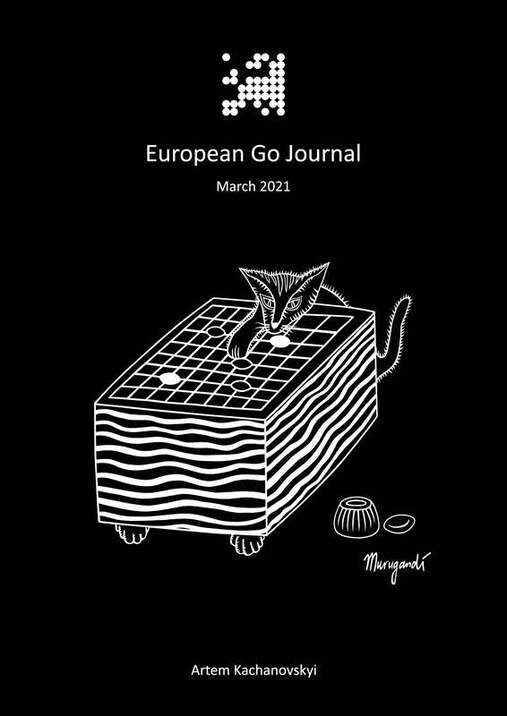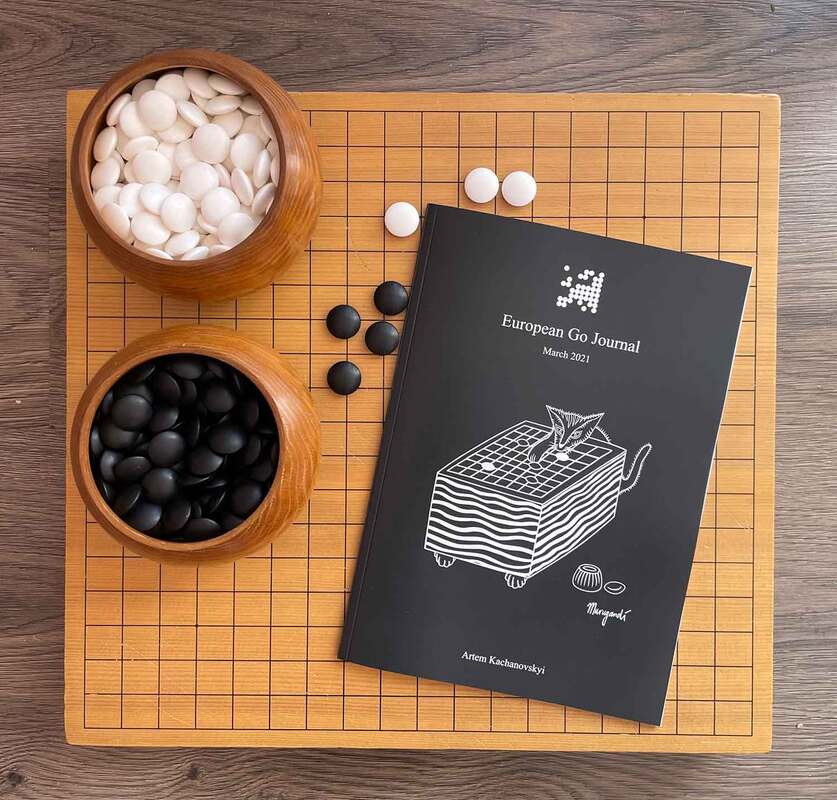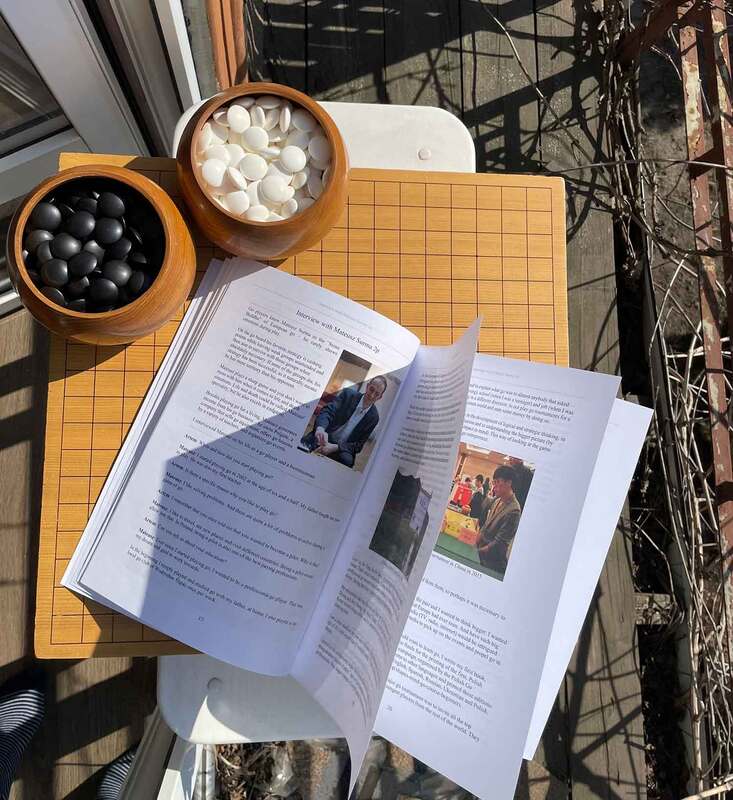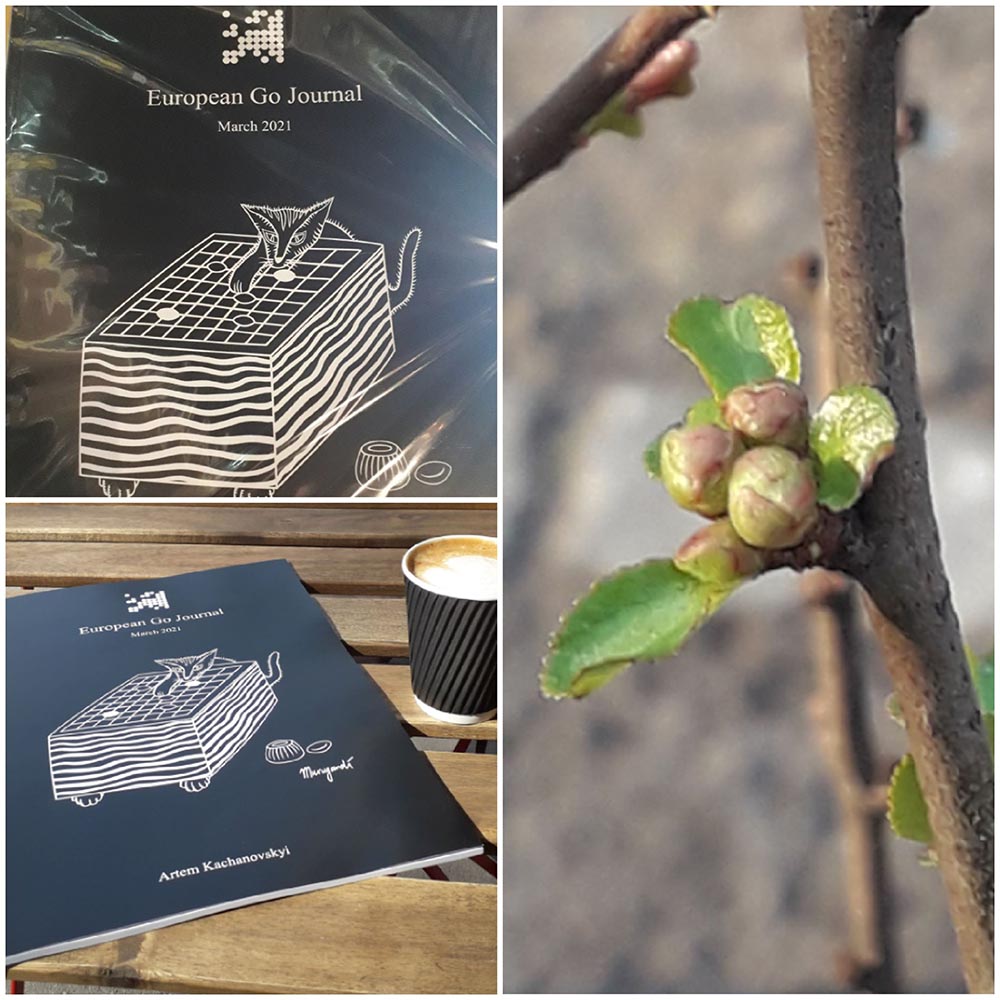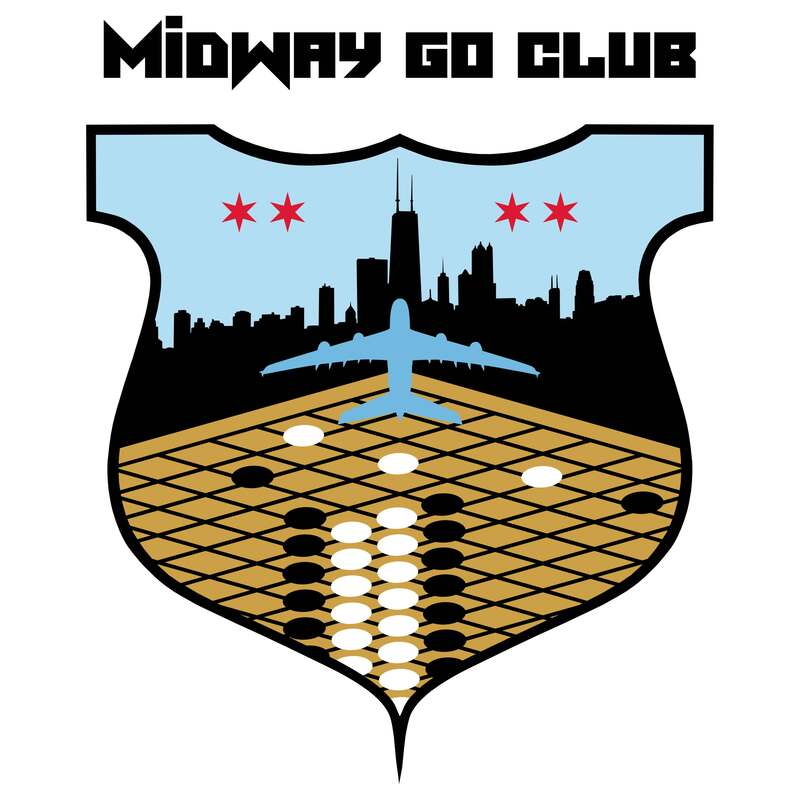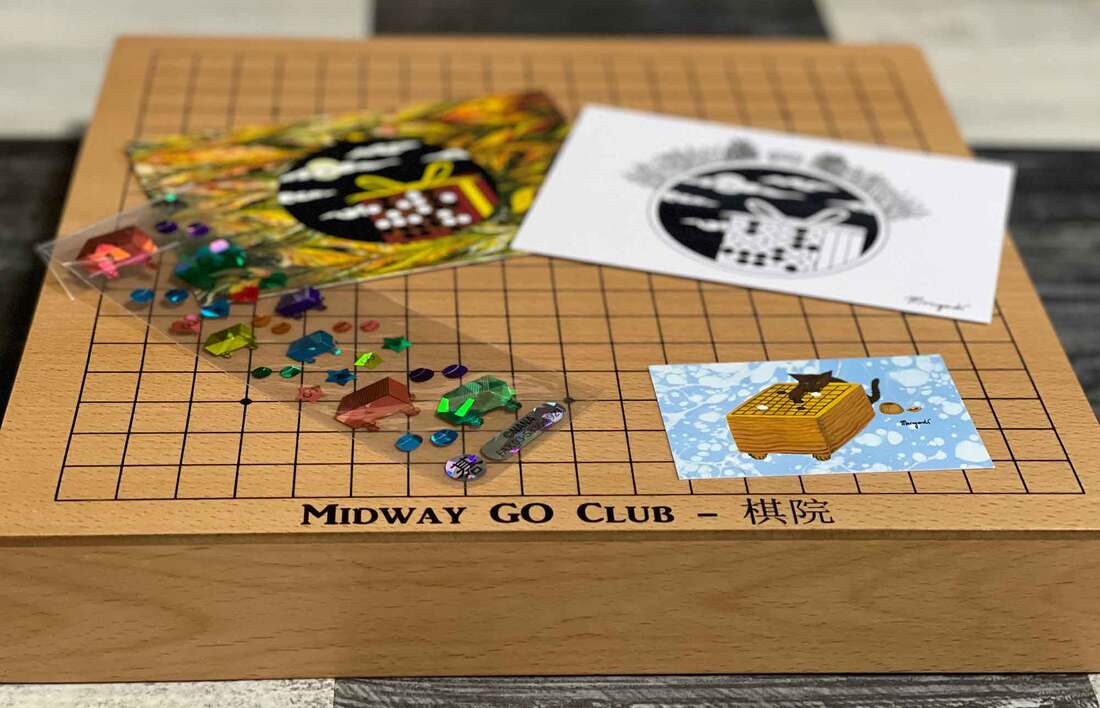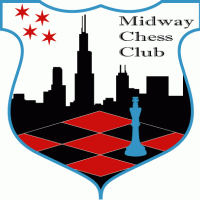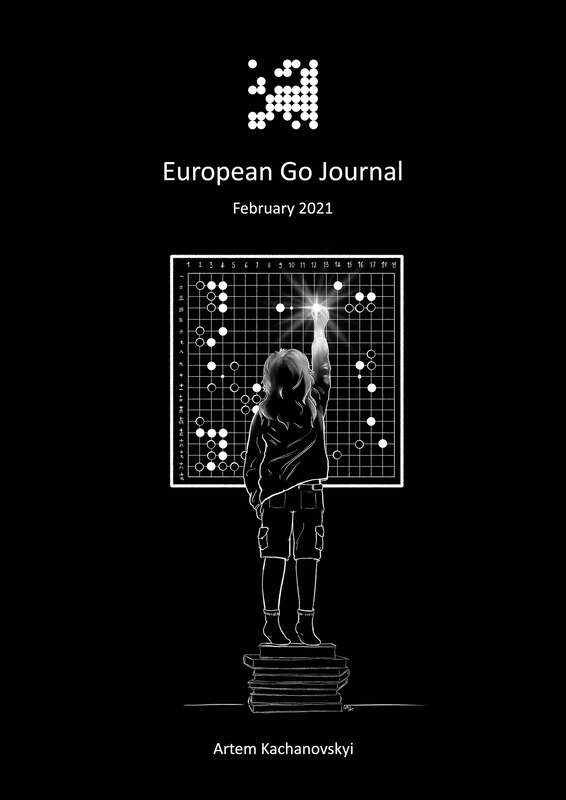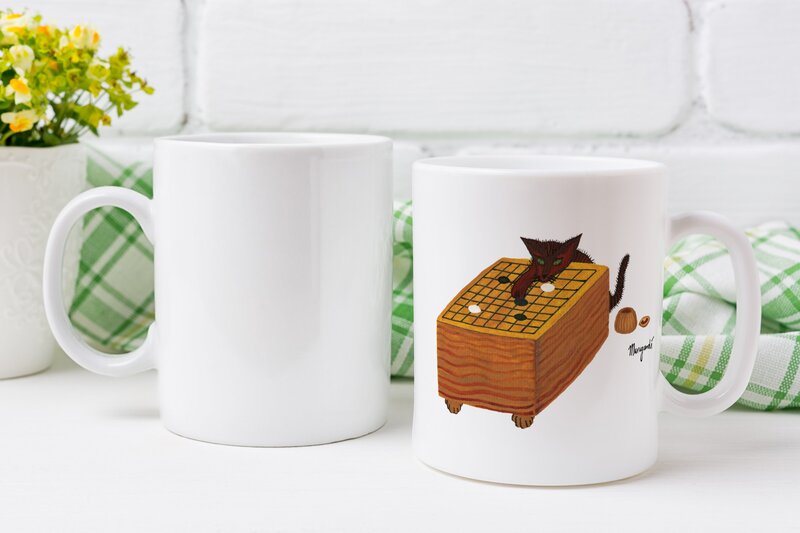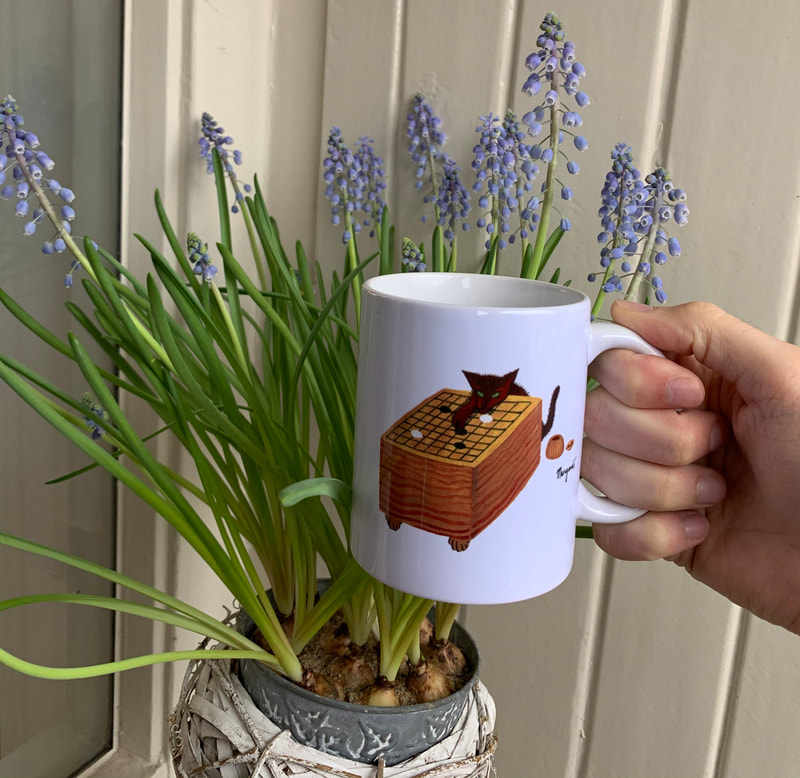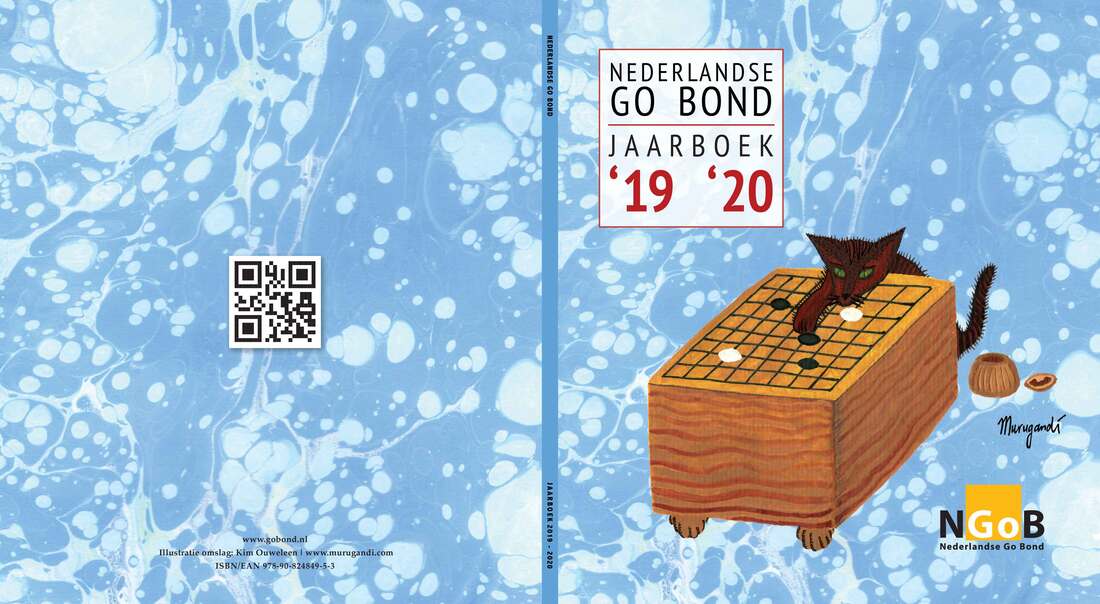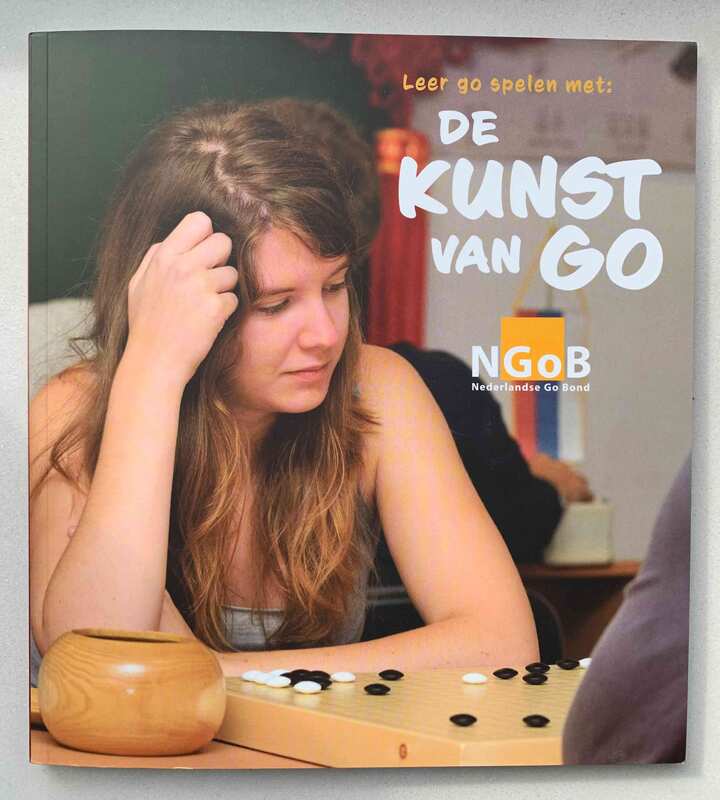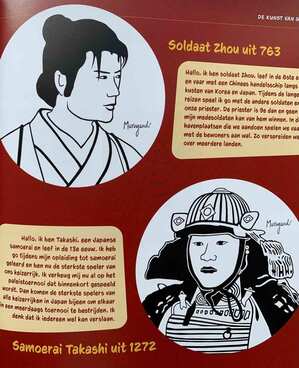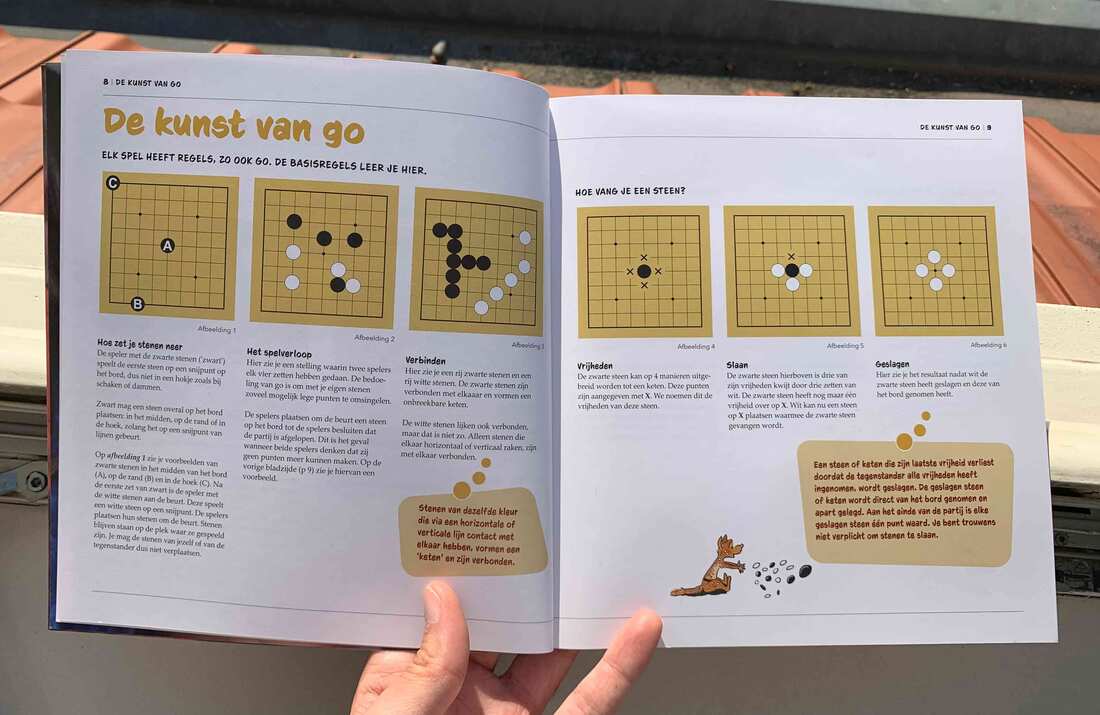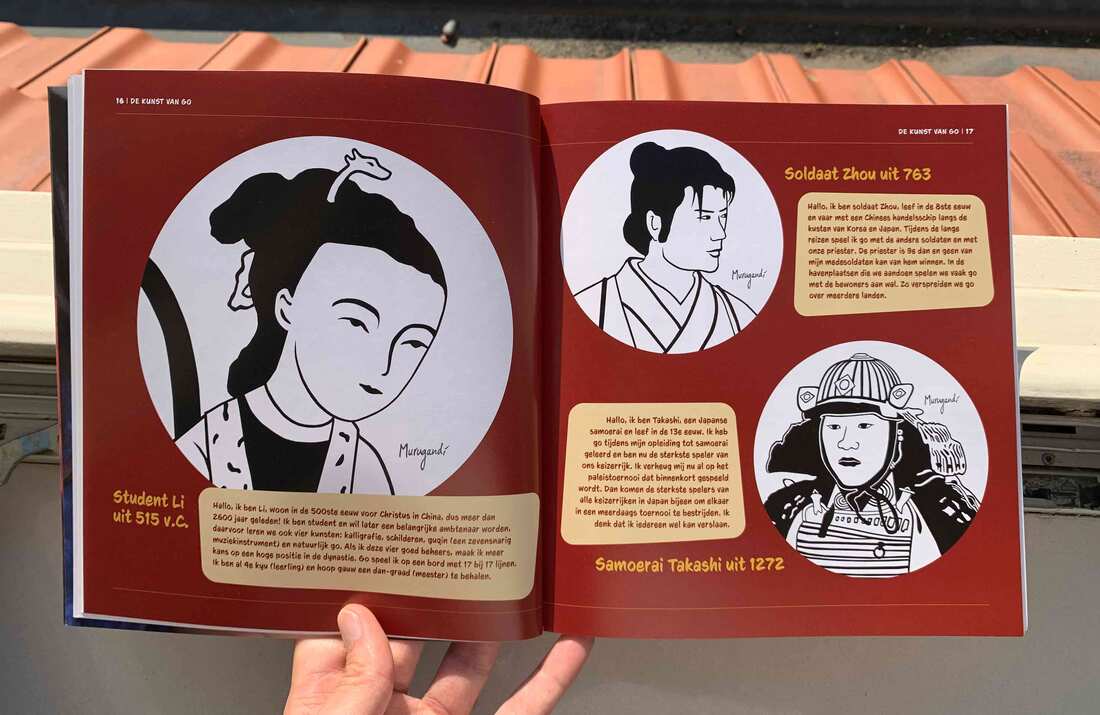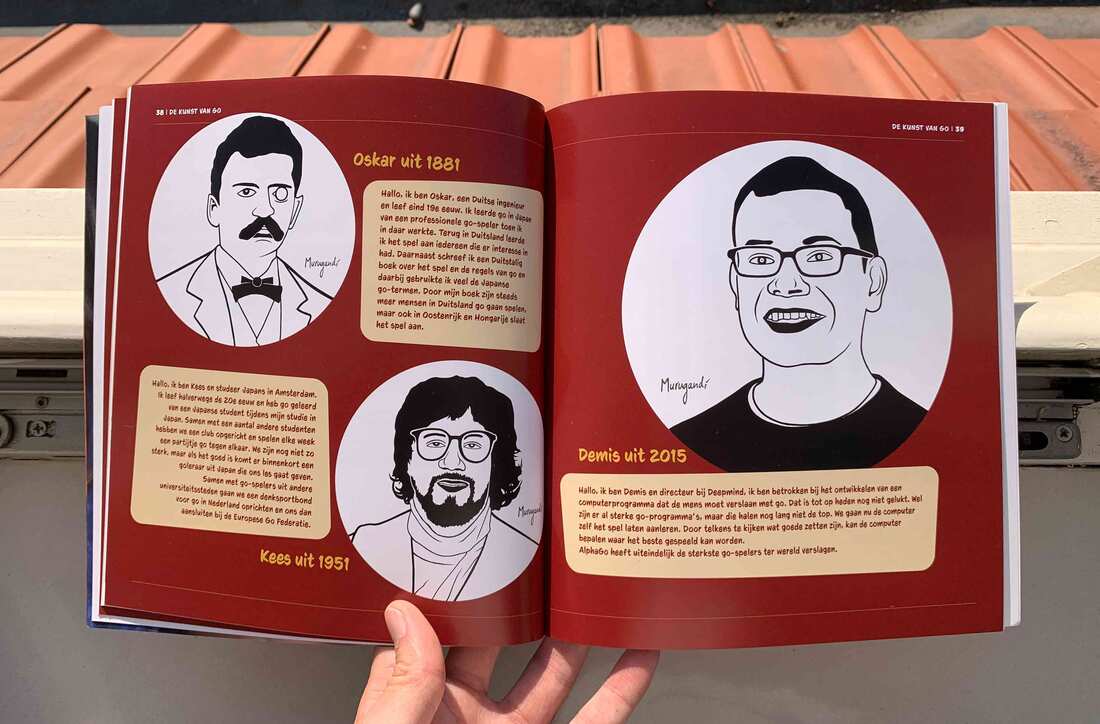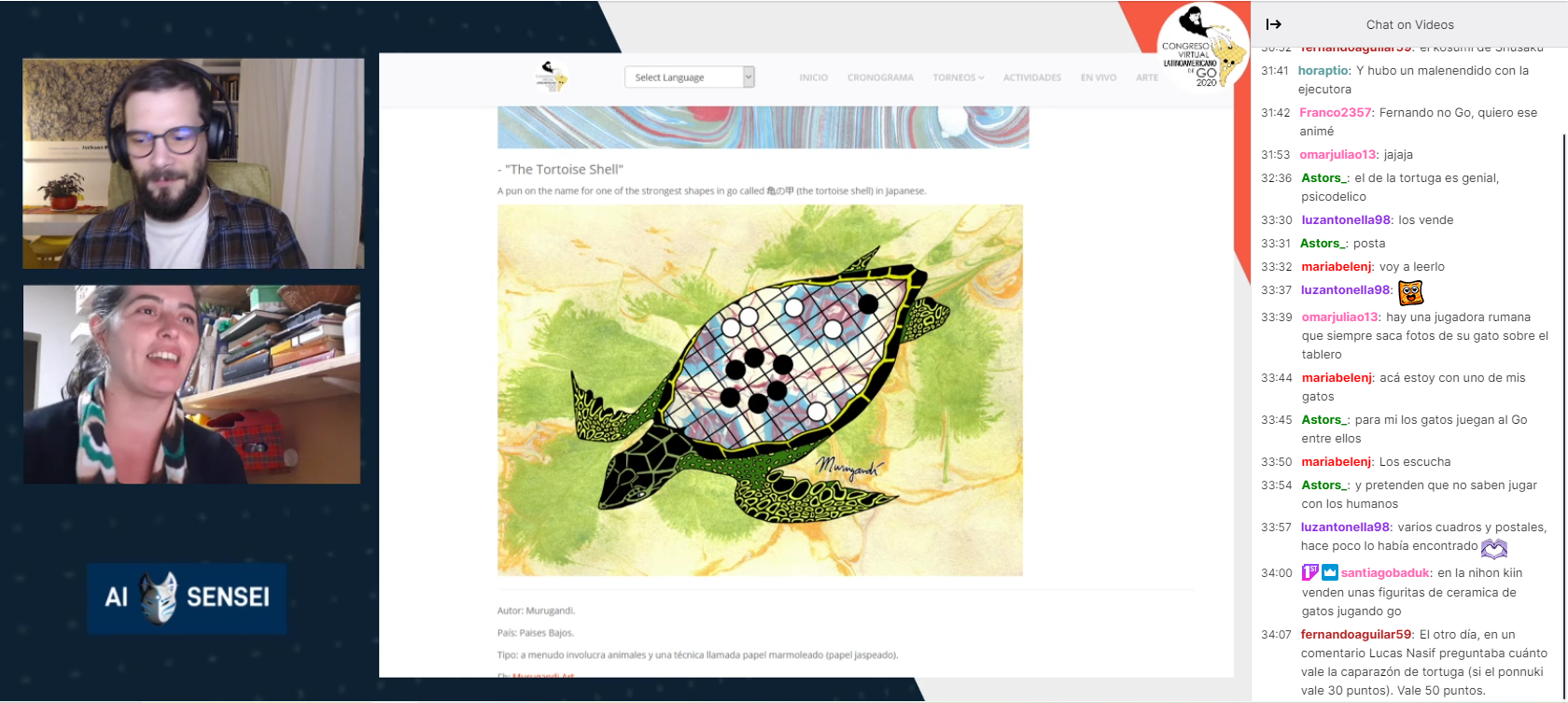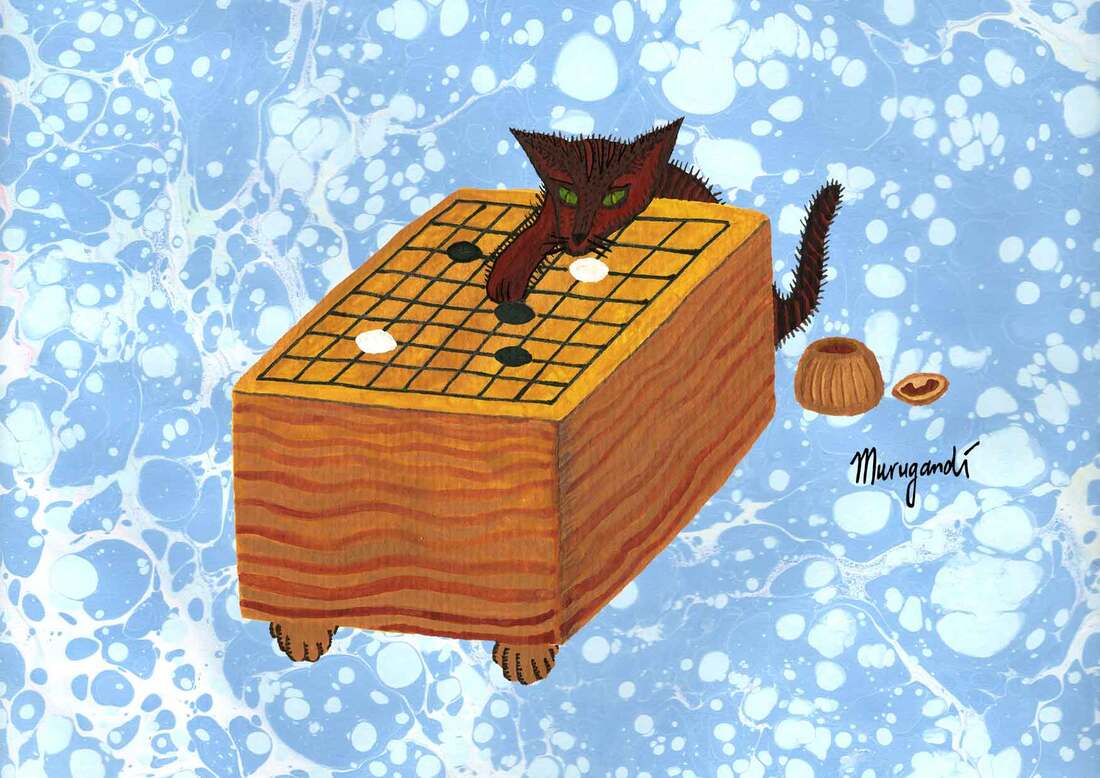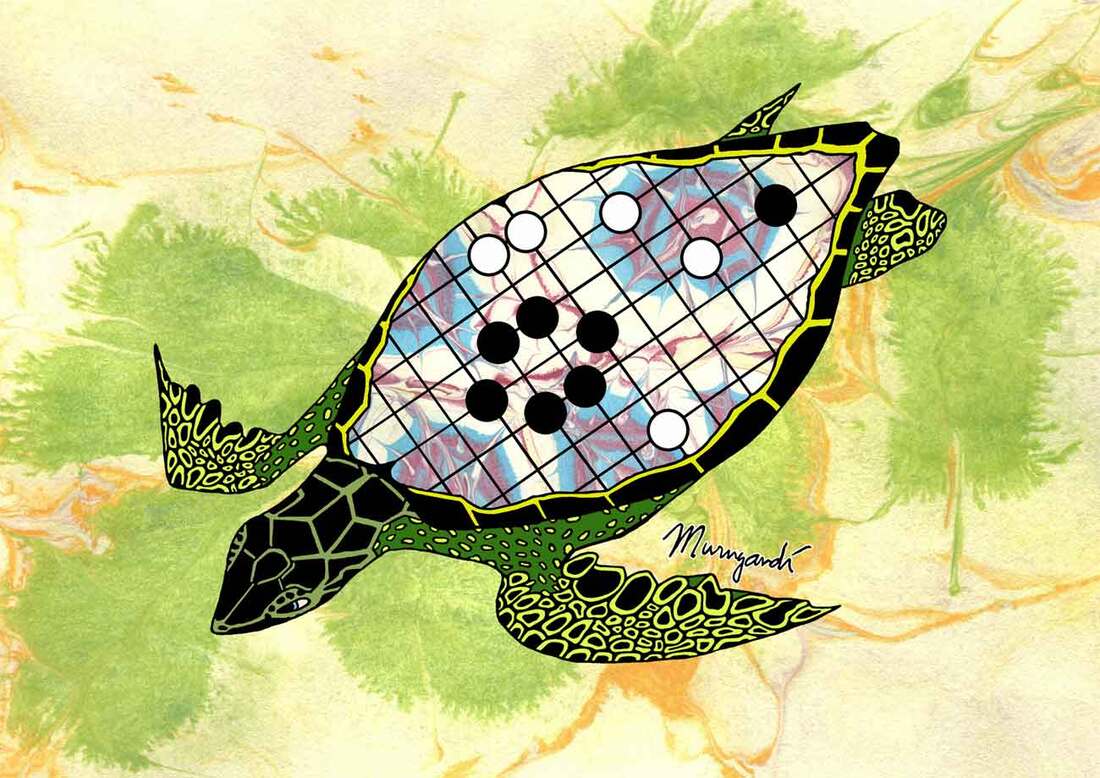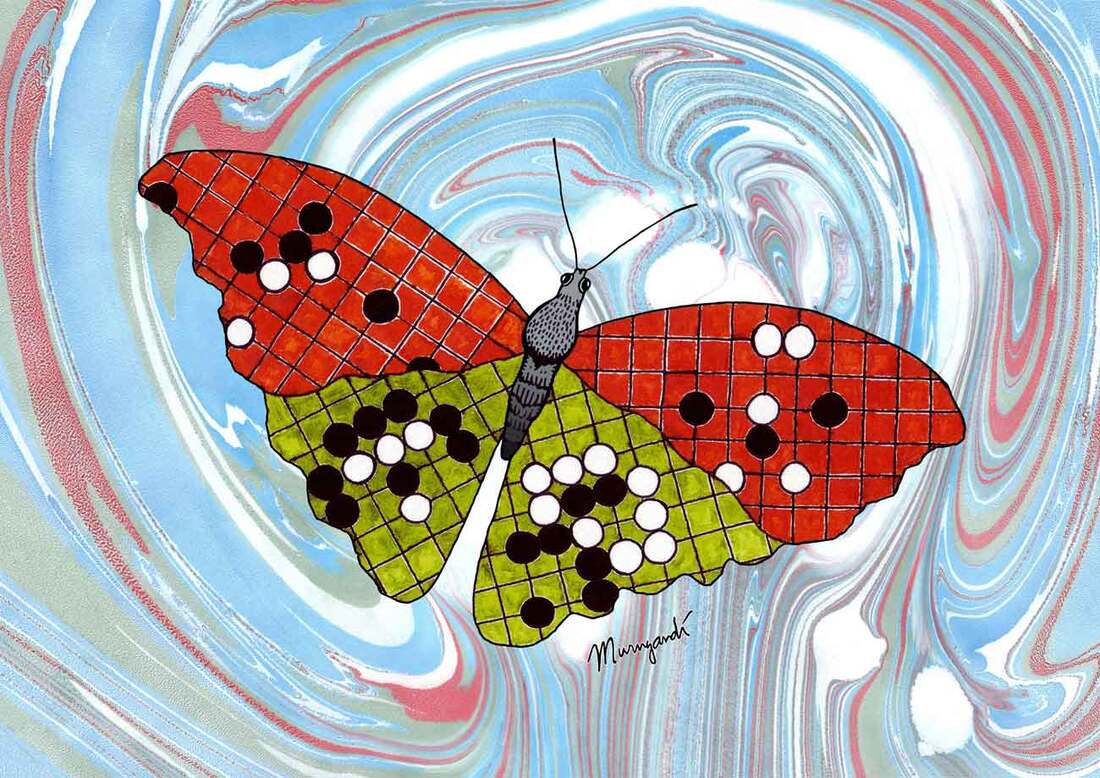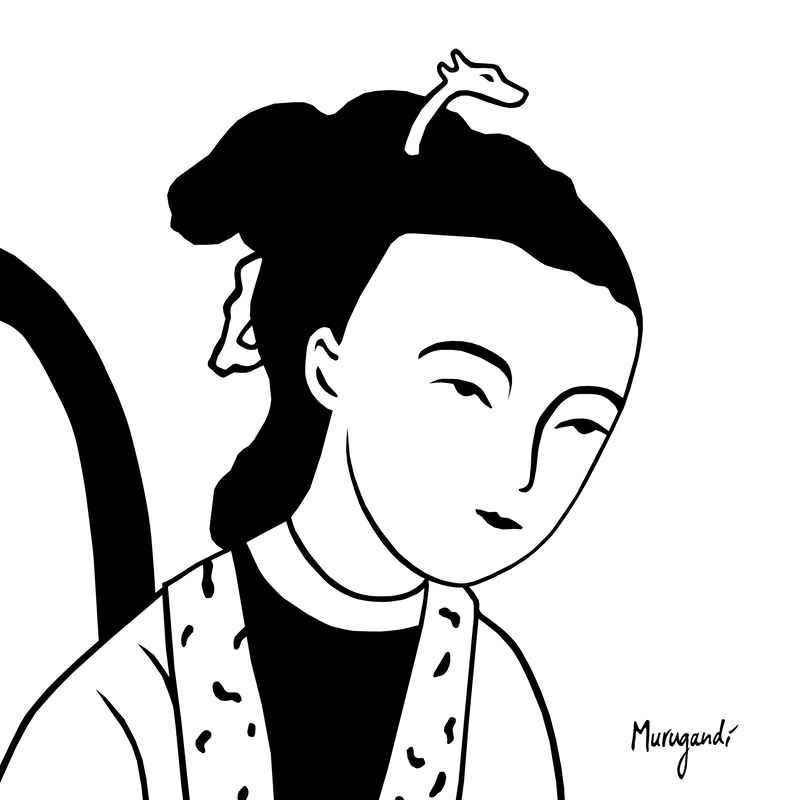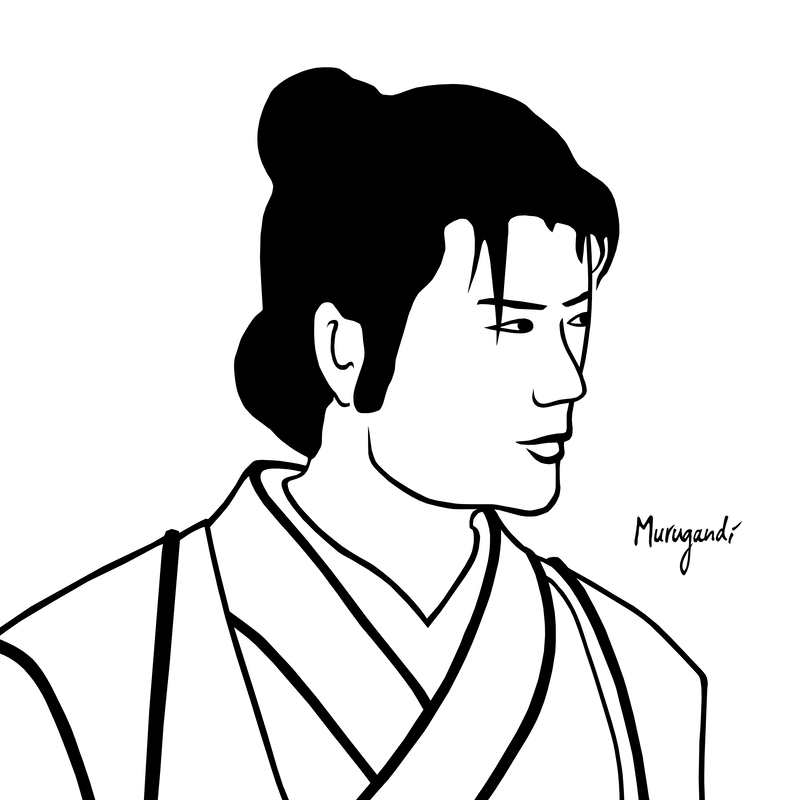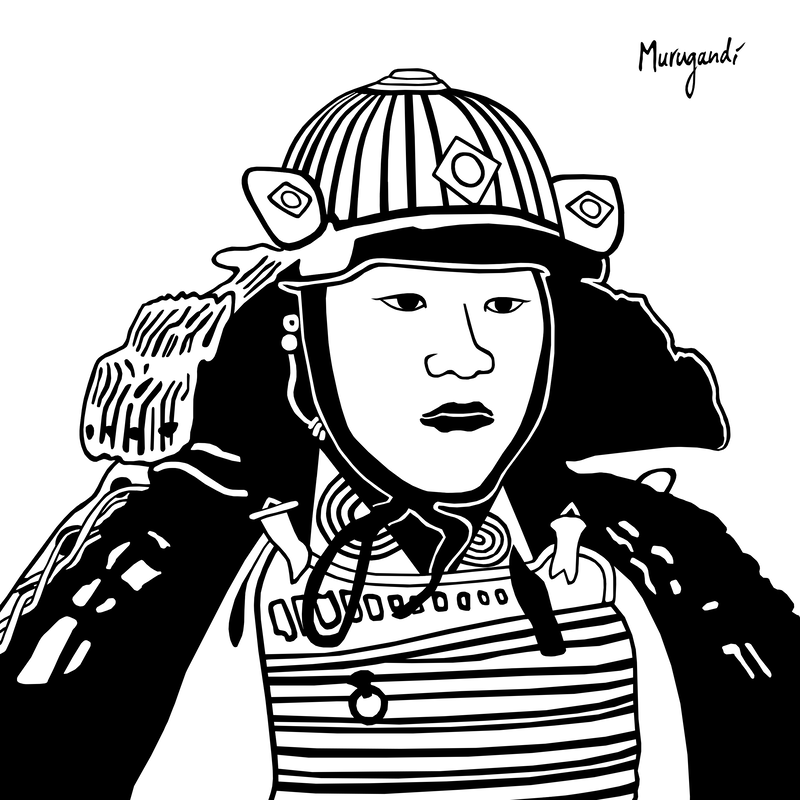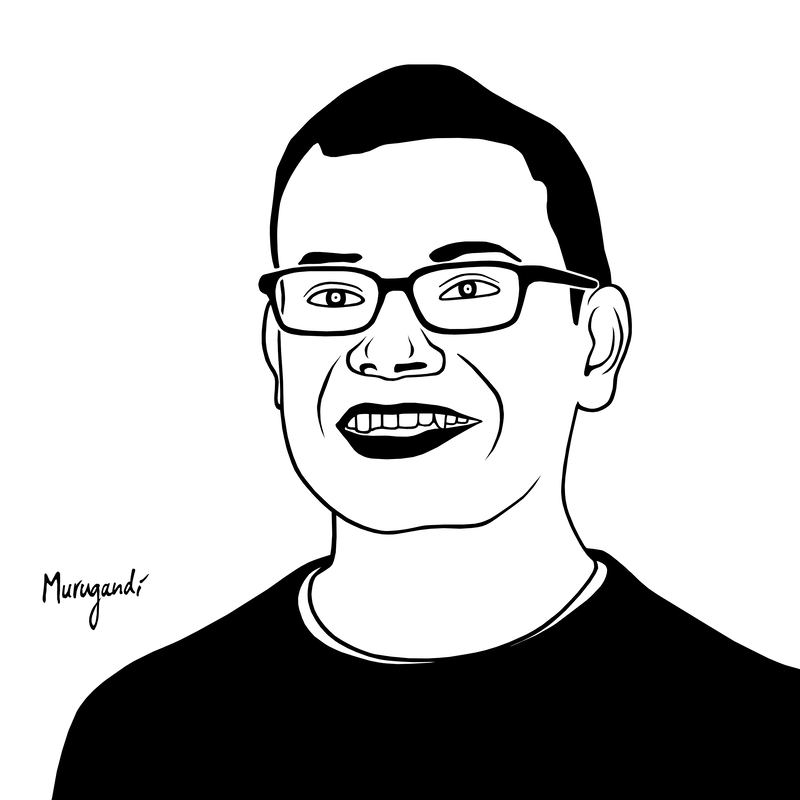|
The March edition of the European Go Journal is ready. The digital edition has already been distributed to the subscribers. The PDF is at the printer and a new, more luxurious paperback than the first edition will soon be posted to the subscribers that want to read from real paper.
For the cover I made a special black and white version of my artwork "Sniffing the Third Line". On pages 26-28 the color version of the same artwork is included with more background information on my inspirations for that painting. I also helped Artem Kachanovskyi, the author and compiler of the European Go Journal, with the layouting and overall editing of the magazine. We worked hard together this month to create a magazine for European go with high quality content and I'm proud of the result. This is only the second edition of the journal. I started working with Artem in the beginning of March, when I had just one or two days to proofread the entire first edition before we released it. We've come a long way since then, with already more than 100 subscribers! We are still perfecting the streamlining of the creative process. If you want to get a copy, go to www.patreon.com/europeangojournal
1 Comment
One of my customers on Etsy, William Sheehan, was happy with his order and asked me if I'd consider doing a private commission for him. William is 54 years old and has 20+ years of experience in chess under his belt. Only recently, about two months ago, he got into go and has already reached the level of 14-kyu. Previously William ran a chess club and as he is now fully submerged into go, and plans to start a go club. He showed me the logo of his chess club that he made himself (see picture below), in which he incorporated the blue and red colors of the flag of Chicago. The stars in the top left corner are taken from the same flag and the buildings in the background form the skyline of the city.
We exchanged some ideas and soon I understood that the go logo was to be quite similar, but that I was free to give it my personal twist. William told me that he lives close to the Midway International Airport, and that's where the name of his club comes from. Soon after, I got the idea to include an airplane in the design and have it take off from the go board. William had also mentioned the tarmac of the airport and this gave me an idea for the go-position: the go stones shown in the logo form a ladder that resembles a tarmac and emphasizes the movement of the plane. The ladder is good for White: White is in atari, but can move out with the next move, connecting up to his corner stones and breaking free, just like the plane. Interestingly, although the blue of the plane looks darker than the blue of the sky, they are in fact the same color. It is an optical illusion caused by the black skyline. Another optical illusion is at play in the go stones: did you know that when go stones are produced, the white stones are made slightly smaller than the black ones? This is done because white objects seem larger to our eyes. I experienced that first hand during the design process: when using same-sized stones for black and white, the white stones appeared much larger, and I had to reduce them for a balanced composition. For the font of the letters we ended up chosing a mechanical-style font called 'Noise Machine'. If I'm ever in Chicago, I look forward to dropping by at the Midway Go Club. I made a logo for IGLO - Internetowa Go Liga O!
IGLO is an online go league that was started around the time the covid-19 pandemic began. The league was created by Cezary Czernecki, supported by the Polish Go Association, and is now running its 9th season with 57 players competing. Participation is free of charge and most participants are from Poland and Ukraine, but anybody is welcome to take part. Each group consists of 8 players, in which each player plays against seven others, one game per week, The players compete to promote to the higher rated groups and, when results are suboptimal, can also fall down to the groups below. When a new player joins, he/she will be placed in a suitable group relative to their playing strength. IGLO includes regular lessons and game commentaries by top European players Stanislaw Frejlak 7 dan and Lukas Podpera 7 dan. You can find out more about IGLO on its website here. A new monthly go magazine is born, called the European Go Journal. This is a great initiative by Artem Kachanovskyi 2dan professional, under the banner of the European Go Federation. Artem got in touch with me earlier this year and told me of his aspirations to start the journal. His plan was to include a chapter on go-related art and photography in each edition and he asked me if I wanted to take part in it - as a way to make the magazine more interesting and at the same time promote my illustrations and Etsy shop. I agreed and chose "The Ear Reddening Move" for the first edition, an artwork I did on commission for the Latin American Go Congress in 2019. The artwork and a small background story about it can be found on page 35 of the journal. Artem also asked me advice on the layout and design of a magazine, and because of my experience as an author of go related articles and the 2016 European Go Yearbook, I ended up proofreading the whole journal. I also created the cover for the first edition, which features a beautiful artwork called "Hope" by French illustrator Camille Lévêque from Stoned on the Goban. The February 2021 edition of the European Go Journal is now available, free for download. The magazine will appear monthly in both online (PDF) and printed (paperback) form.
If you want one or if you want to support future editions, please have a look at the Patreon page: https://www.patreon.com/europeangojournal The plan is for me to stay involved in the making of future editions of the journal. I will edit, proofread and design the cover. Artem has asked me to use one of my own artworks for the March-edition and I am thinking to make a black and white version of my go playing cat for the occasion. For the go and cat lovers out there, I've printed mugs with my go playing cat artwork on it. I only have 15 in stock, it's available in my Etsy shop.
The go playing cat on the 2019-2020 Dutch Go Yearbook is the fifth consecutive cover in a series I have made for the Nederlandse Go Bond. The covers feature animals, go positions and paper marbling. The other four designs with background information can be found here.
The cat came into being as a watercolour painting in May earlier this year. It was inspired by other go-cat related art I had seen in the past. You can read more information about it here. I gave away the original drawing in an art raffle on social media to lift spirits during the covid-19 pandemic and to celebrate having almost 800 likes on my Facebook page. You can watch the raffle video here. I'm grateful to the NGoB; this series of yearbooks is becoming quite something and I hope future Dutch go players will enjoy my covers as much as I do. The 2019-2020 edition will be printed and distributed among the members of the Dutch Go Association in January 2021. About a month ago I made six illustrations for a new beginners go book by the Dutch Go Association (Nederlandse Go Bond), depicting go players through the ages.
The book is now printed and landed in my mail box yesterday. It is called "De Kunst van Go" (The Art of Go) and has 72 pages full of pictures, rules and exercises for Dutch readers who want to learn the game. The photos in the book are really nice and show all sorts of different European go players, from pretty girls crunching their brains to kids playing pair-go with their grandparents. Gissella Gastin and Luciano Salerno asked me to participate in the Sala de Arte of the Congreso Virtual Latinoamericano de Go. The congress is organized by the Federación Iberoamericana de Go and the Asociación Argentina del Juego de Go and is taking place as I type, until 11 October. The Sala de Arte is an online gathering of go inspired art, some of which is especially made for the occasion. My entry is one of circa 30 and includes three of my "classic" go designs: The Tortoise Shell, the Go Butterfly and my most recent go artwork, Sniffing the Third Line (a cat playing go).
All entries for the Sala de Arte were also shown on the Twitch channel of AAdeGo: https://www.twitch.tv/videos/763714342 (my art starts around minute 31:30) https://www.twitch.tv/videos/763772347 Especially my turtle was popular amongst the viewers. Even Fernando Aguilar, famous in the South American go world, typed a few words about this go shape that is more powerful than a ponnuki and is said to be worth 50 points. It is nice to see that go related art is being appreciated and is getting attention in such a big event. Thank you Gissella and Luciano for the organization and let's make more go art in the future! The Dutch Go Association (NGoB) asked me to make a series of black and white portraits for a beginners-book they are publishing this year. The portraits will be accompanied by short stories about the individuals. Some of them are fictional characters and some are real people. The pictures and stories take you through the ages of go players:
- 5th century BC: Li is described as a Chinese student aspiring to become a high functionary. To become one, he must master the four arts - calligraphy, painting, guqin and weiqi. - 8th century AD: Zhou is a soldier who travels along the coasts of Japan and Korea on a Chinese trade ship. During his travels he plays go on deck with the other soldiers and the high priest. - 13th century AD: Takashi is a Japanese samurai who learned to play go during his training to become a warrior. He is the strongest go player of the empire and is looking forward to the upcoming castle tournament. - End of the 19th century: Oskar is a German engineer who learns to play go from a Japanese professional player during his work time overseas. After returning to his homeland, he aims to spread go in Germany and writes the first Western book on the topic. - Halfway through the 20th century: Kees is a student from Amsterdam who studies Japanese. During his time in Japan he learns the game from a Japanese student. Back home he starts a go club and aims to establish a national go association. - 2015: Demis is the director of DeepMind and is the driving power behind the making of a computer program that should challenge the best go players on the planet. AlphaGo will eventually do exactly that and defeat the strongest human go player alive. Congratulations to Maja Brouwer for winning my first ever art raffle and taking home the original of "Sniffing the Third Line". And congratulations to Dan Iugulescu for winning 14 different go postcards with my designs!
Today at 19:00 o'clock I randomly picked two winners live on social media amongst the people that followed my page and commented under the drawing I posted on Instagram and Facebook. Want to support the artist? All my originals are for sale and I also offer postcards and posters of all my art. Stay tuned for my new art and art lotteries in the near future. |
AuthorWelcome to my website! My name is Kim Ouweleen, my artist pseudonym is Murugandi. I am an illustrator, author, proofreader and go teacher from Amsterdam. Do you want to support my art? I take on private commissions.
On Etsy I sell prints, postcards and mugs.
On Spreadshirt I sell clothing, mouse pads, stickers & more.
Want to stay updated on my latest art? Click below to subscribe to my newsletter.
You can view my previous newsletters here.
Archives
December 2023
Categories
All
|
